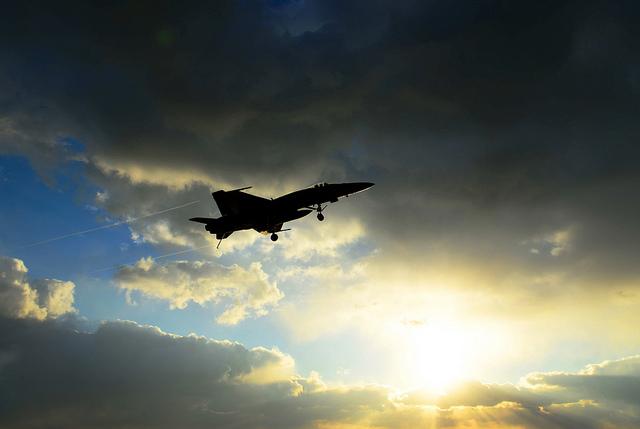
Flight Path
Two US Marine Corps F/A-18C Hornets made an emergency landing at Tainan Air Force Base, Taiwan, on 1 April after the pilots reported a mechanical issue. The landing was dismissed as precautionary, but Michael Cole from The Diplomat suggests that it could be a strategic signal in response to Chinese assertiveness.
To maintain the US’ technological advantage, American aviation is accelerating the development of ‘degraded visual environment technology’ to allow helicopters to fly in rain, snow, fog or dust. Also on the list of future capability are hacker-proof helicopters and drones that can both fly and swim. Hacker-proof helicopters are designed to ensure that adversaries are unable to take command over weaponised or surveillance UAVs—technology that will no doubt be desirable on other military aircraft.
Falklands redux? Argentinian plans to procure at least 12 Chinese fighter jets have led the UK to explore options to update its air defence system in the Falkland Islands. Tension is set to escalate with recent allegations that the British government spied on the Argentine government between 2006–11, and British discoveries of oil and gas reserves north of the islands.
Turning now to current operations, Saudi-led coalition airstrikes continue in Yemen, while Kenyan fighter jets have launched airstrikes against al-Shabaab targets in northern Somalia. US airstrikes in Iraq have helped to reclaim the IS-held city of Tikrit. This ABC video offers an insight into the airstrike operations from a US aircraft carrier on the Persian Gulf.
Rapid Fire
Debate rages on between Alan Dupont and Hugh White on Australian defence strategy and irregular warfare. To get up to speed, start with Professor Dupont’s paper here, then a follow up response by Professor White, then a rebuttal, a reply, and the latest instalment.
General Wesley Clark, former NATO Supreme Allied Commander, delivered a briefing last week at the Atlantic Council on military assistance to Ukraine. The briefing analyses the hybrid form of warfare being conducted by aggressors and forecasts an attack against Ukrainian forces within the next 60 days. A video of the briefing can also be viewed in full here.
VICE news reports that Russian soldiers have ‘given up pretending’ that they’re not involved in the conflict in Ukraine. The report is based on a BBC interview (available here, in Russian) with Russian volunteer soldier Dmitry Sapozhnikov, a self-declared Special Forces squad leader for the Donetsk People’s Republic. The interview gives previously undisclosed details of the battle for Debaltseve, including the involvement of Russian generals in leading the operation.
CT Scan
The return of Matthew Gardiner, an Australian believed to have assisted Kurdish forces overseas, puts Australia’s foreign fighter laws to the test. The case also reveals the awkward reality that evidentiary issues—particularly the extraction of evidence from overseas conflict zones—will make prosecuting foreign fighters hard.
In a bid to make sense of the Garissa attack in Kenya, Jeffrey Gettleman of The New York Times explains that a weakened al Shabaab has led it to its new strategy of ‘mass murder on the cheap’. Explanations for al Shabaab’s grim success range from arguments that the international community lacks engagement with it as a global issue, to Kenya’s colonial ‘roots’.
France is rolling out the ‘Islam à la Française’, a national campaign teaching the French interpretation of secularism to Muslim figures and public officials. However, Muslim leaders retorted that in mosques, ‘everyone speaks out against extremism’ already. In the UK, police hired a British Muslim comedian to hold CT workshops for teens, revolving around a skit in which the comedian’s cousin becomes radicalised (15 mins).
Finally, this Washington Post article looks at the ‘hidden hand’ behind the Islamic State: Saddam Hussein.